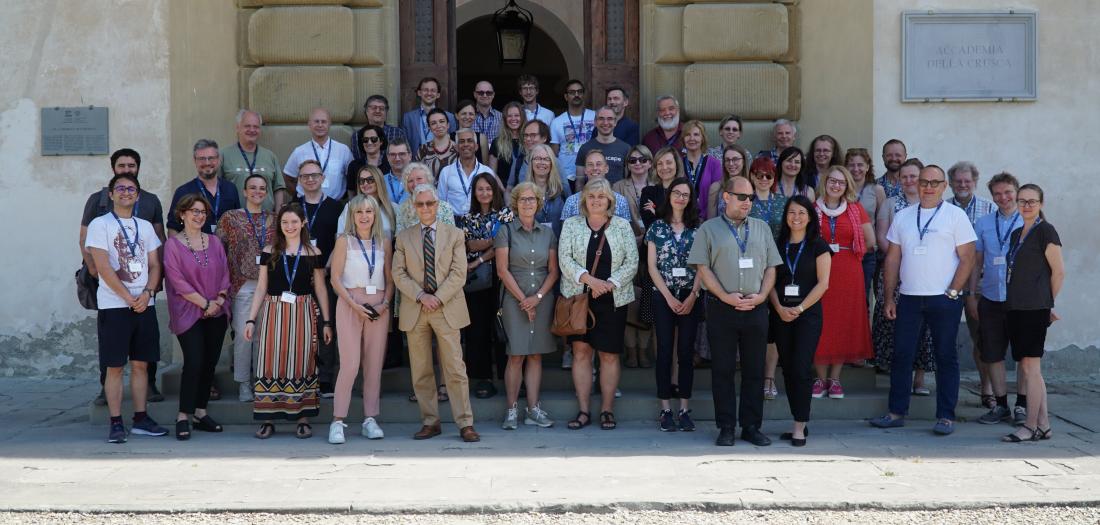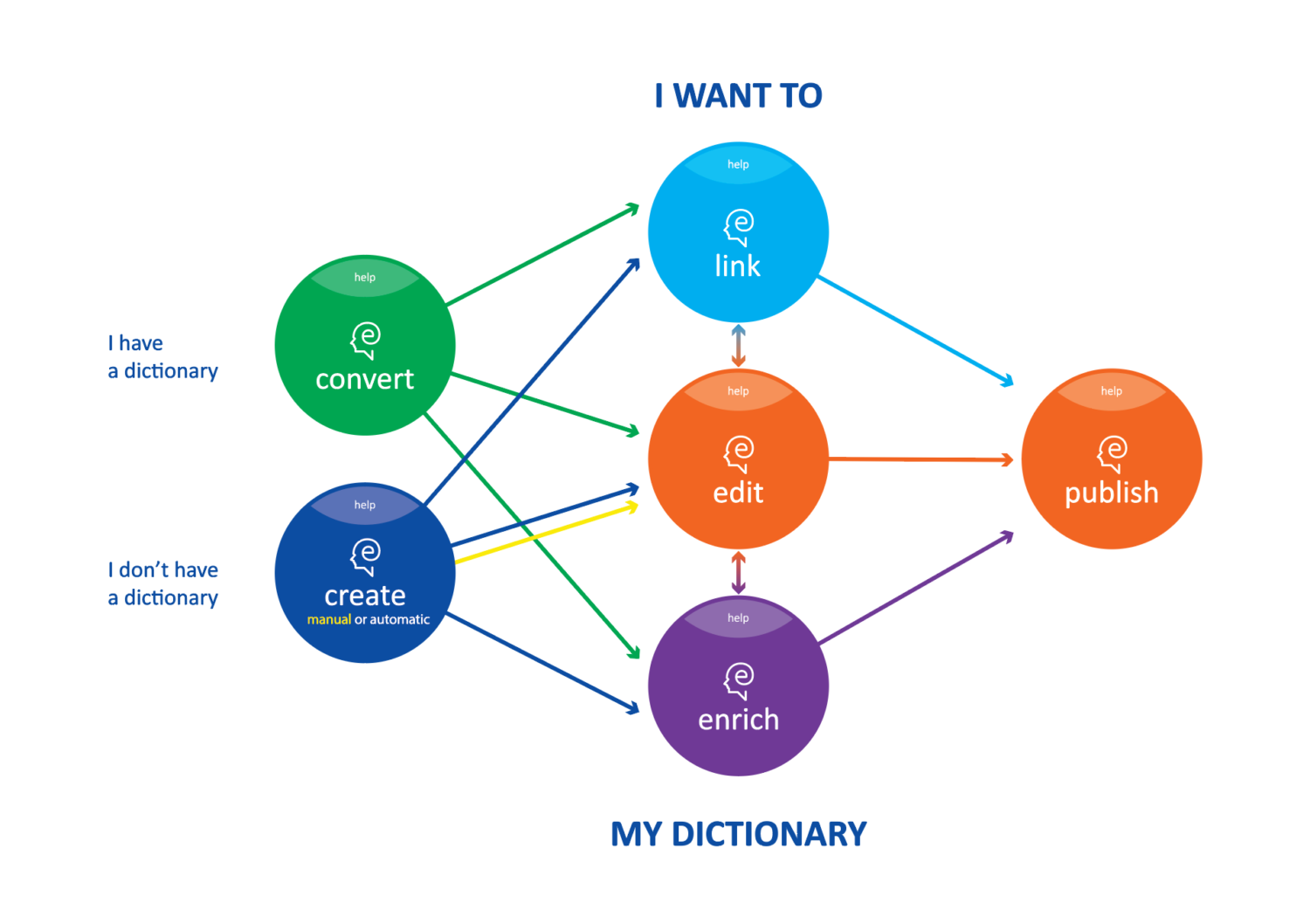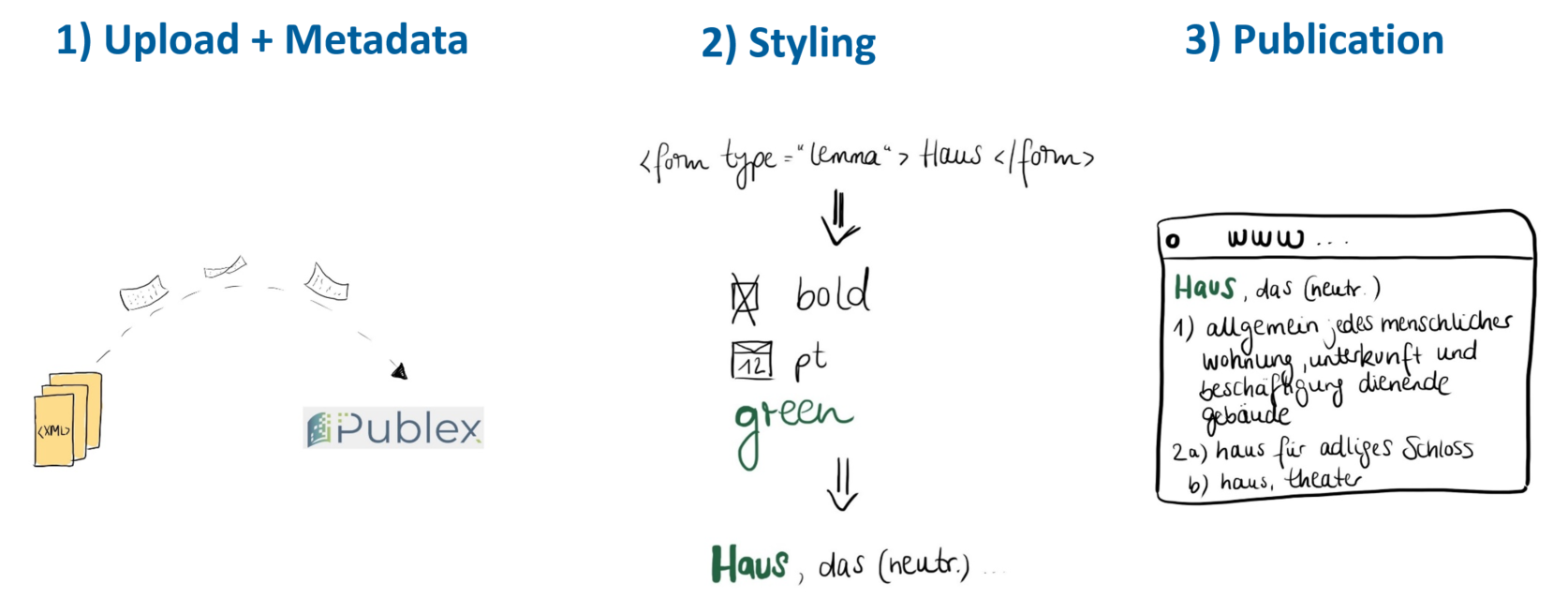ELEXIS Showcase Event in Florence
Anne Klee's impressions of the final meeting of the Horizon 2020 project
24.06.2022 | General, Events, Project News, Academic exchange

Final photo from the ELEXIS Showcase Event in Florence
On June 7 and 8, 2022, the meeting „ELEXIS: Showcase Event from A to Ω: Outcomes, Sustainablilty & Afterlife of a new European Lexicographic Infrastructure“ took place in Florence, attended by representatives of the 17 partner institutions as well as the Observer institutions.The event was both a retrospective and an look ahead - in various presentations, the results and products created within the framework of „ELEXIS European Lexicographic Infrastructure“ were presented. In addition, perspectives were raised on how these should also be maintained, made available and further developed beyond the project context. Our project member Anne Klee describes her impressions of the conference in Florence and reports which tasks and software developments the TCDH had taken over in this European research project.
Day 1: Tuesday, June 7, 2022
The hosts had invited for the first part of the meeting on Tuesday, 7.6.22, in the conference area of the Hotel Londra. After a greeting by Monica Monanchini from the National Research Council of Italy, the project coordinator Simon Krek from the Jožef Stefan-Institut (Ljubljana) gave an introductory summary of the project's beginnings and progress.
Emerging from the COST Action „Enel – European Network of e-Lexicography“, 17 partner institutions from 14 countries worked in an interdisciplinary consortium between 2018 - 2022 to create foundations that would enable and promote international networking and knowledge exchange in the field of digital lexicography. The project period was very successful! Together, standards, strategies and tools for the digitization, extraction, structuring, publication and linking of lexicographic resources were developed.

The introductory part of the conference was followed by the presentation of the results developed within ELEXIS: Andraž Repar (Jožef Stefan Institute) and Carole Tiberius (Institute for Dutch Lexicology) presented the Elexifier, a tool that allows users to mark up dictionaries in XML based on machine learning. Adam Rambousek (Jožef Stefan Institute; Lexical Computing CZ) demonstrated how the cloud-based open source tool Lexonomy can be used to create and publish dictionaries. Anne Klee from TCDH then presented the Publex publication tool and Lenka Bajčetić (OEAW) presented the EDiE evaluation tool for statistical analysis of dictionaries.
Publishing dictionaries with Publex
Anne Klee presented the research and development results of the Publex tool - developed in Trier - to the professional audience. Publex allows users to publish their XML dictionary data on the web. The special feature of this tool is that no technical know-how or technical infrastructure with large storage capacities is required for its use, as it is a purely web-based application that stores and publishes the data on a server provided. An instruction manual guides users in detail and step by step through the application process. This can be roughly divided into three steps: 1. uploading the data, 2. defining the representation, and 3. publishing the dictionary.

Further information can be found on the project page Publex. The possibility of digital access to Publex is available via publex.uni-trier.de. The tutorial will be published via the DARIAH Campus in due time. Additional slides to the presentation by Anne Klee can be found under Downloads.
Day 2: Wednesday, June 8, 2022
The historical rooms of the Accademia della Crusca provided a particularly festive setting for the program of the second day. In the first block of lectures, the speakers presented the results of the work package on networking technologies.
First, they presented two tools for dictionary linking: John McCrae (National University of Galway) showed how NAISC can be used to align dictionaries of the same language in RDF format at the level of articles and meanings. For cross-linguistic linking, Roberto Navigli (University of Rome) presented the BabelNet linker.
For the visualization of the outputs of these two tools, elexiLink was developed, the application of which was illustrated by Gregor Leban (Jožef Stefan Institute) in his presentation. The tools also provide the basis for the creation of the Dictionary Matrix, in which the dictionaries collected by the ELEXIS partners will be interconnected.
Miloš Jakubíček (Lexical Computing CZ) presented the tools One-click Dictionary and (No)SketchEngine. One-click Dictionary connects a corpus management system such as SketchEngine or noSketch Engine with the dictionary creation and online dictionary publishing system Lexonomy and provides an automatically created dictionary draft (e.g., keywords, word forms, collocations, examples) that can be post-processed in Lexonomy by the lexicographer.
Roberto Navigli then showed in his presentation how the lexicographic data provided by ELEXIS partners are used to solve NLP tasks (in particular multilingual Word Sense disambiguation, entity linking, semantic parsing) in the SyntagNet, VerbAtlas and MultiMirror genutzt werden. In this context, he also referred to the multilingual Word Sense Alignment benchmark manually created within ELEXIS with over 2000 sentences tagged with POS and Sense labels in 10 different languages.
Iztok Kosem then presented further tools and services from the ELEXIS work packages, such as the Elexifinder for assisted searching of publications from lexicographic research and interactive offerings such as the CrossTheWord-Spiel.
Toma Tasovac summarized the results of the "Training and Education" work package, which has produced a series of courses that build on each other.They offer an introduction to lexicography, but also provide knowledge about methods, standards and tools, and are designed for users of different levels of knowledge and experience. The courses, among which the tutorial on the use of Publex, are published on the DARIAH-Campus. The overview of all developed tools and services can be found on the ELEXIS project page.
Collaborations continue: Post-Elexis future
After the presentation of the DMLex data model by Michal Mechura (Lexical Computing CZ), Simon Krek closed the meeting with his outlook into the post-Elexis future. Several steps are intended to ensure the continuation of the project results and to further enable and support the collaboration of the community: First, the tools and services developed in ELEXIS will be maintained in the future by the CLARIN.SI B-Centre.
Furthermore, the "Clarin Knowledge Center" will be launched for the exchange of lexicographic knowledge and research. Currently, 14 institutions and 46 experts have already agreed to participate. TCDH is also involved and will contribute its expertise in the areas of (retro)digitization, XML markup, networking, federated content search and online publication. Finally, the ELEXIS Association will be founded, which foresees an active collaboration of the members in the development of data, tools and services, as well as the hosting of conferences and workshops.
Link: The Recordings of the event
Downloads
- publex_presentation_florenz_homepage.pdf (913.5 KB)

